Revolutionizing Knee Ligament Imaging: The Superior Efficiency of GNRB & Dyneelax Arthrometers in Radiology
Explore the GNRB & Dynelax Arthrometers, elevating knee ligament imaging beyond traditional methods like MRI for detecting ACL injuries. Discover their integration into radiology, enhancing treatment precision and outcomes. Review case studies and learn about the implementation of this promising arthrometer technology in orthopedic medicine.
Introduction
In the precise and detail-oriented realm of radiology, ensuring accurate diagnoses is paramount. Radiology departments have traditionally leaned on Magnetic Resonance Imaging (MRI) for evaluating Anterior Cruciate Ligament (ACL) injuries, a crucial aspect of orthopedic radiology. While MRI provides a high-resolution insight into soft tissue structures, it primarily offers a static analysis of the knee joint.
Today, the healthcare landscape is evolving with the advent of innovative diagnostic tools like the GNRB and Dyneelax arthrometers. These arthrometers herald a new era of functional analysis, offering a dynamic assessment of knee laxity which is instrumental in diagnosing partial ACL ruptures with higher sensitivity.
Not only do these arthrometers present a more nuanced understanding of ligament injuries, but they also promise significant cost savings. With France alone conducting over one million MRI evaluations annually for knee ligaments, juxtaposed against the 50,000 ACL reconstruction surgeries performed, the economic burden is substantial. The utilization of GNRB and Dyneelax arthrometers stands as a cost-effective and clinically superior alternative, poised to drastically reduce unnecessary expenditures on MRI evaluations which often don't lead to surgical intervention.
The following sections will delve deeper into the transformative potential of GNRB and Dyneelax arthrometers in enhancing diagnostic accuracy, ensuring cost-efficiency, and promoting a forward-thinking approach in orthopedic radiology.
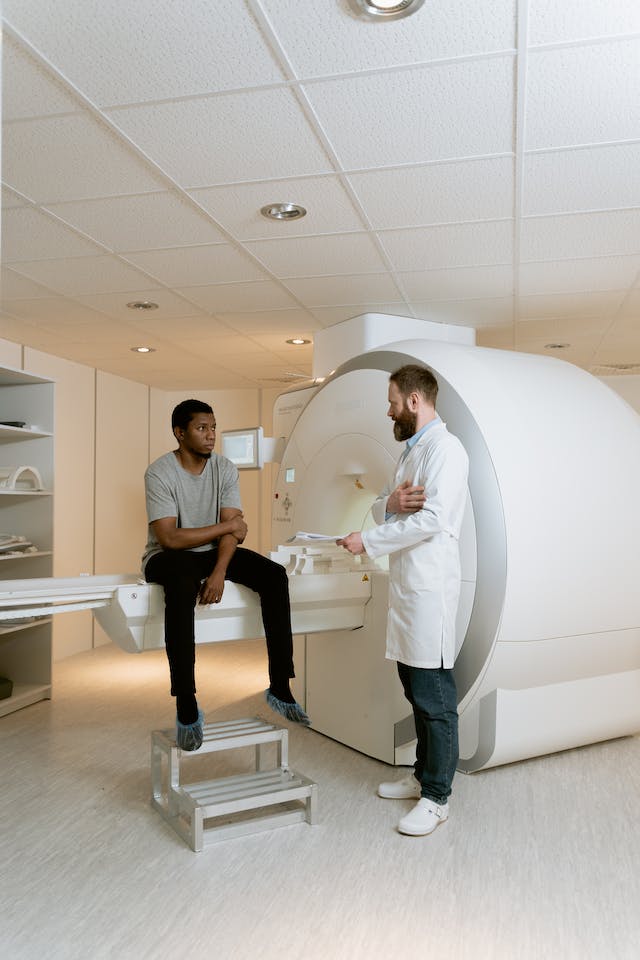
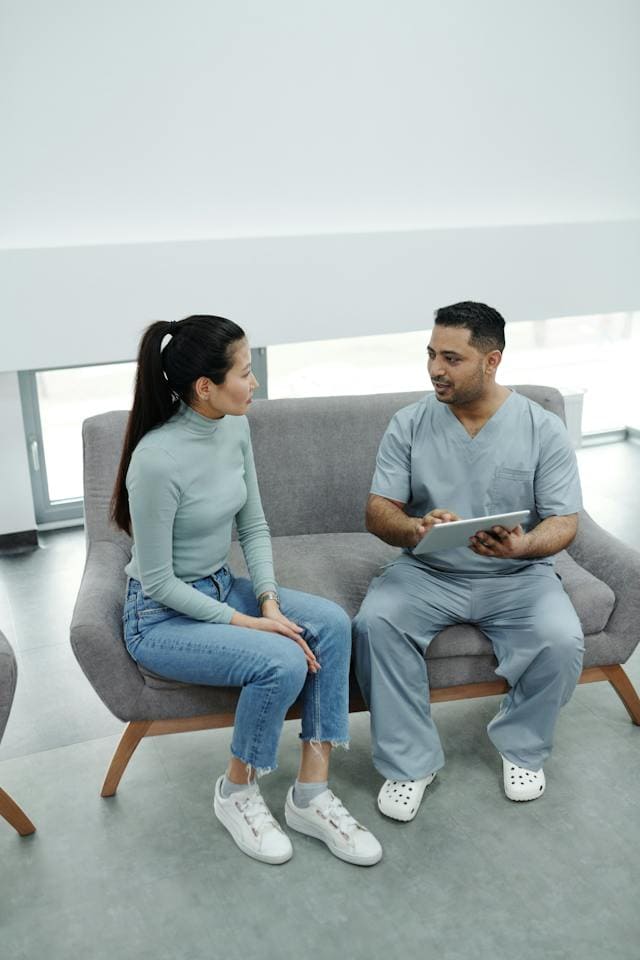
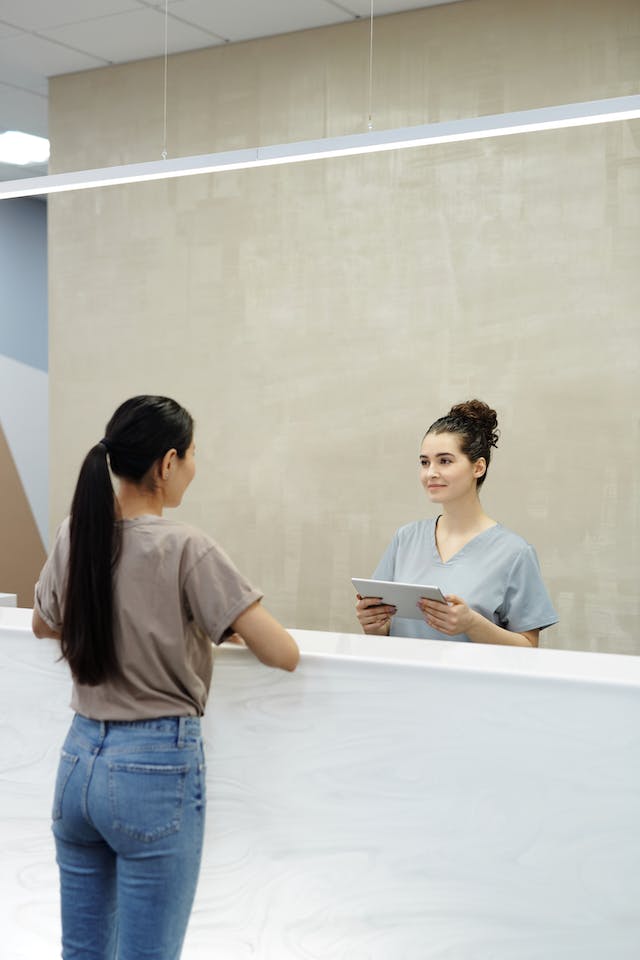
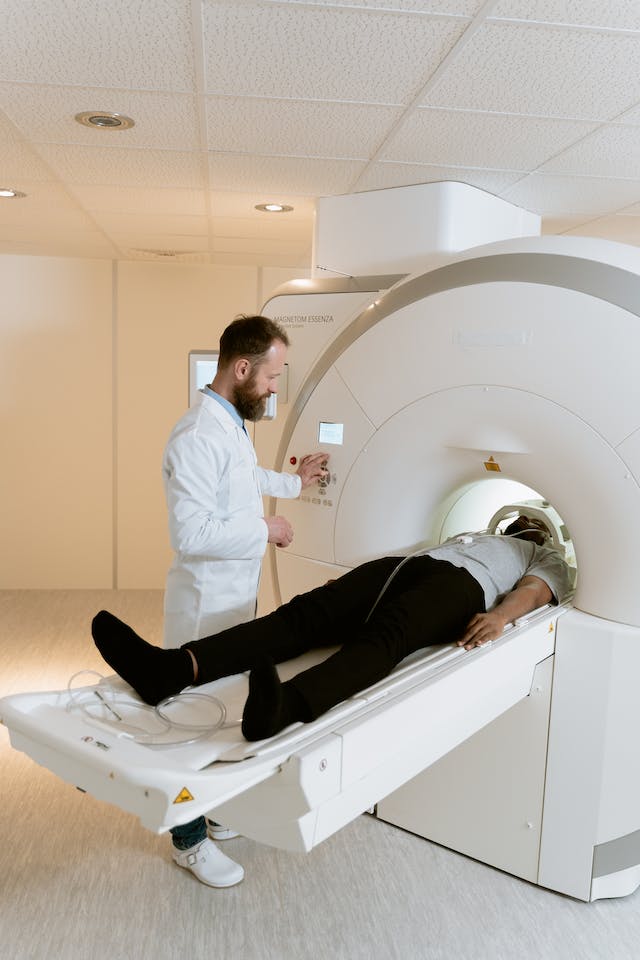
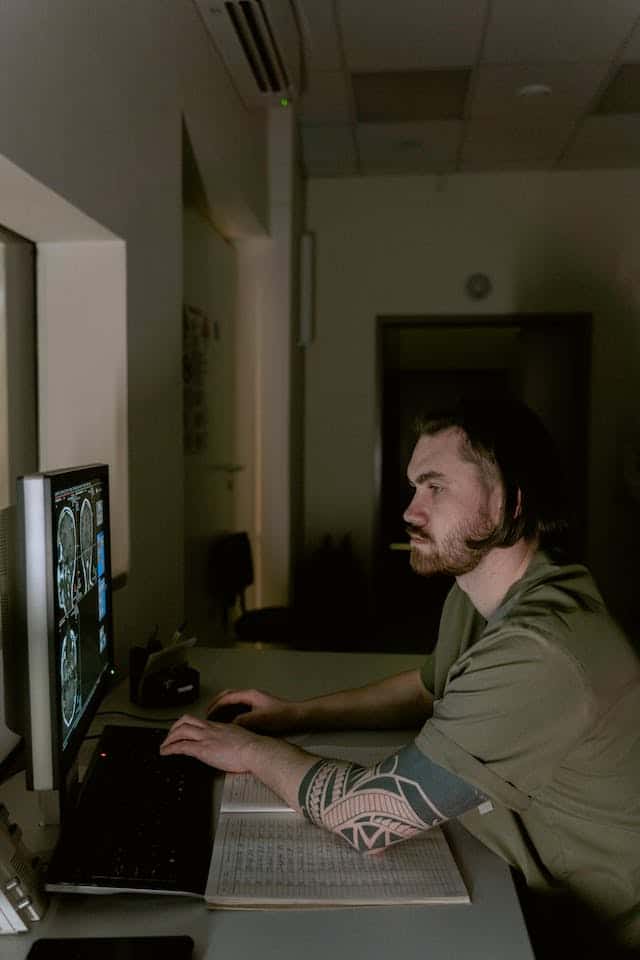
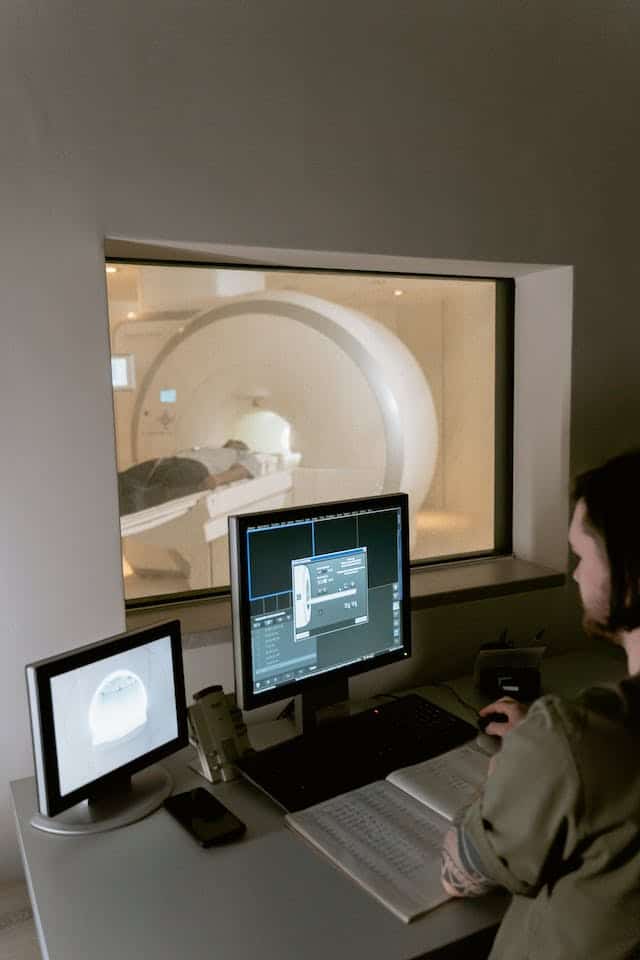
Arthrometers: Enhance Knee Ligament Imaging Accuracy
The cornerstone of effective treatment lies in the accuracy of diagnosis. When it comes to evaluating the integrity of the Anterior Cruciate Ligament (ACL), traditional MRI analysis has been a go-to choice in radiology departments. However, the emergence of knee laxity arthrometers such as GNRB & Dyneelax has significantly elevated the diagnostic landscape.
Superior Sensitivity in Detecting Partial ACL Ruptures
Higher Sensitivity:
GNRB and Dyneelax arthrometers have demonstrated superior sensitivity in detecting partial ACL ruptures compared to MRI. The capability to identify these partial ruptures early on is crucial for devising an effective treatment plan, which in turn, enhances patient outcomes.
Supporting Data:
2023 – GNRB® laximeter with magnetic resonance imaging in clinical practice for complete and partial anterior cruciate ligament tears detection: A prospective diagnostic study with arthroscopic validation on 214 patients.
DOI: 10.1016/j.knee.2023.03.017
Real-World Implications:
Early and precise detection of partial ACL ruptures facilitates timely intervention, which could potentially prevent further deterioration and associated complications. This precision in diagnosis underscores the value of integrating GNRB and Dyneelax arthrometers in radiology departments.
Comprehensive Assessment of Knee Laxity
Dynamic Analysis:
Unlike MRI’s static analysis, GNRB and Dyneelax arthrometers provide a dynamic, functional assessment of knee laxity. This is instrumental in understanding the extent and implications of ligament injuries, thus offering a more comprehensive diagnostic insight.
Functional Insights:
The ability to evaluate the knee’s behavior under various loads/torques and movements enables a nuanced understanding of the injury, which is pivotal for planning effective treatment strategies.
Comparative Advantages:
Detail the advantages of functional analysis over static analysis, especially in the context of ACL evaluations, and how it translates to better-informed treatment decisions.
Rotation Analysis:
Dyneelax’s rotation analysis feature enriches diagnostic insights by evaluating the rotational behavior of the knee joint. This is particularly beneficial in cases suspecting rotational instability, providing a more comprehensive understanding of ligament integrity and function.
The cornerstone of effective treatment lies in the accuracy of diagnosis. When it comes to evaluating the integrity of the Anterior Cruciate Ligament (ACL), traditional MRI analysis has been a go-to choice in radiology departments. However, the emergence of knee laxity arthrometers such as GNRB & Dyneelax has significantly elevated the diagnostic landscape.
Revolutionize ACL Evaluations with GNRB & Dyneelax Arthrometers
Cost Efficiency
The financial aspect of medical diagnostics is a pivotal concern, especially in a healthcare landscape striving to optimize resources without compromising on quality. The utilization of GNRB and Dyneelax arthrometers presents a compelling case for cost-efficiency, while enhancing diagnostic precision in ACL evaluations.
The case for cost efficiency extends beyond mere financial savings. It encapsulates a vision for a more sustainable, effective, and resource-optimized healthcare framework. The integration of GNRB and Dyneelax arthrometers in radiology departments is a step towards realizing this vision, marking a significant stride in aligning financial prudence with clinical excellence.
Reducing
Unnecessary MRI
Evaluations:
High Costs of MRI: The expense associated with MRI evaluations is substantial. With over one million MRI evaluations performed annually in France for knee ligaments, the financial burden on the healthcare system is hefty.
Cost-Effective Alternative: GNRB and Dyneelax arthrometers emerge as cost-effective alternatives. By accurately identifying partial ACL ruptures, they help in reducing the number of unnecessary MRI evaluations, which often don’t lead to surgical interventions.
Immediate Cost Reduction: With each MRI test costing €500 compared to €60 for an arthrometer test, the immediate cost reduction per test is significant. This difference in cost can translate to substantial savings for healthcare providers and patients alike.
Long-Term Savings
using our
arthrometers:
Potential Savings: The cost disparity between MRI and arthrometer tests is significant, with MRI tests costing €500 and arthrometer tests only €60. This equates to a cost saving of €440 per test. Over a year, considering the one million MRI evaluations performed in France for example, transitioning to arthrometers could potentially save up to €440 million (assuming all MRI tests could be replaced, which may not be the case).
Quick and Effective Diagnosis: The efficiency and ease of use of GNRB and Dyneelax arthrometers also translate to quicker diagnoses, which is not only beneficial for patient care but also for reducing the workload and operational costs in radiology departments.
Resource Redirection: The savings achieved by using arthrometers instead of MRIs for knee ligament evaluations can be redirected to other critical areas within healthcare, such as acquiring new technologies, funding research, or enhancing patient care services.
Comparative
Cost
Analysis:
Cost Breakdown:
- Annual Cost of MRI Evaluations in France: 1 million MRI tests × €500 = €500 million
- Potential Annual Cost with Arthrometers: 1 million arthrometer tests × €60 = €60 million
- Potential Annual Savings: €500 million - €60 million = €440 million
Investment Justification: The initial investment in GNRB and Dyneelax arthrometers is quickly offset by the substantial cost savings achieved from reduced MRI evaluations. Over time, the return on investment (ROI) amplifies, making these arthrometers a financially prudent choice for radiology departments.
Long-term Financial Impact: Projecting the cost savings over a multi-year period demonstrates a significant reduction in diagnostic costs. This long-term financial impact supports the strategic decision to integrate GNRB and Dyneelax arthrometers into the diagnostic process, furthering the goal of cost-effective, accurate, and efficient patient care.

DOI: 10.1016/j.knee.2023.03.017
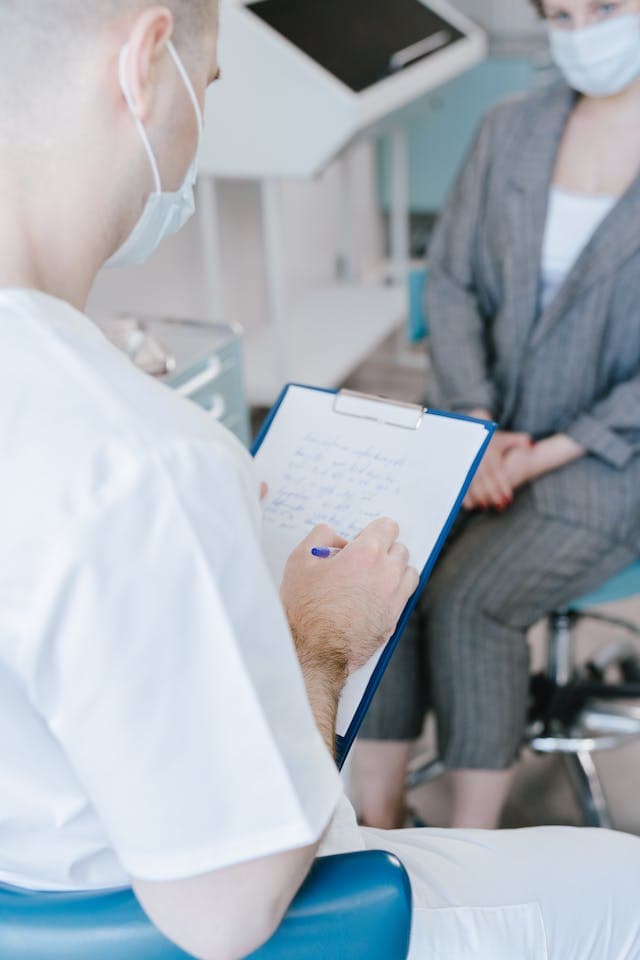
DOI: 10.1016/j.medntd.2023.100254
Ease of Use & Functional Analysis
Harnessing cutting-edge technology for medical diagnostics should not come at the cost of complexity. GNRB and Dyneelax arthrometers are designed with ease of use in mind, ensuring seamless integration into the workflow of radiology departments. Moreover, they introduce a dynamic approach to ACL evaluations through functional analysis, transcending the static analysis typical of MRI.
User Friendly Interface
Intuitive Operation: GNRB and Dyneelax arthrometers come with an intuitive interface that requires minimal training, allowing healthcare professionals to quickly adapt to the new diagnostic tool.
.
Quick Setup: The quick setup feature ensures that the arthrometers are ready for use swiftly, reducing the time spent on preparatory procedures.
.
Accessible Support: With accessible support and training resources, radiology departments can effortlessly transition to utilizing these arthrometers, ensuring a smooth adaptation curve.
Functional Analysis
Dynamic Evaluation: Unlike the static evaluation of MRIs, GNRB and Dyneelax arthrometers offer a dynamic assessment of knee laxity, providing a more nuanced understanding of ACL injuries.
.
Real-Time Insights: Obtain real-time insights into knee function under different load and movement conditions, aiding in a comprehensive evaluation of ligament stability.
.
Functional Implications: Understanding the functional implications of ACL injuries on knee stability helps in devising more effective treatment plans, enhancing the overall patient care journey.
Operational Efficiency
Streamlined Workflow: The ease of use and quick setup of GNRB and Dyneelax arthrometers contribute to a streamlined workflow, reducing the operational burden on radiology departments.
.
Time Efficiency: By cutting down the time required for setup and evaluation, these arthrometers enable faster patient throughput, which is beneficial both for patient satisfaction and operational efficiency.
.
Resource Optimization: Less time spent on each evaluation translates to better resource optimization, allowing radiology departments to allocate resources more effectively.
Innovative Rotation Analysis with Dyneelax
Diving deeper into the diagnostic spectrum, Dyneelax arthrometer stands out with its groundbreaking rotation analysis feature. This innovative approach provides a richer understanding of knee joint mechanics, crucial for a comprehensive evaluation of ACL injuries.
Unveiling Rotational Instability:
Precise Analysis: Dyneelax’s rotation analysis facilitates precise assessment of rotational instability in the knee, a factor often associated with ACL injuries.
Critical Insights: Gaining insights into rotational behavior is critical for understanding the extent and nature of ligament injuries, aiding in more precise diagnosis and treatment planning.
Enhanced Diagnostic Profile: The rotation analysis broadens the diagnostic profile, providing a more complete picture of knee joint health alongside laxity assessment.
Bridging Diagnostic Gaps:
Beyond Static Analysis: While traditional MRI offers a static picture, Dyneelax’s rotation analysis enriches the diagnostic process by adding a dynamic rotational assessment, bridging a significant diagnostic gap.
Comprehensive Evaluation: The combination of laxity and rotation analysis furnishes a comprehensive evaluation, crucial for devising effective treatment strategies.
Informed Decision Making: Better diagnostic information translates to better-informed clinical decisions, enhancing the overall effectiveness and success rate of treatment plans.
Pioneering the Future of ACL Diagnostics:
Setting a New Standard: Dyneelax’s rotation analysis sets a new standard in ACL diagnostics, offering a level of insight that propels orthopedic radiology into a new era of diagnostic excellence.
Leading with Innovation: By leading with innovation, Dyneelax not only facilitates better patient care but also positions radiology departments at the forefront of diagnostic technology.
Future-Ready: Embracing Dyneelax’s innovative rotation analysis is a step towards future-ready diagnostics, aligning with the evolving demands of orthopedic radiology.
The Future of Radiology
The healthcare landscape is in a state of perpetual evolution, driven by continuous advancements in medical technology. The integration of GNRB and Dyneelax arthrometers into radiology departments epitomizes this forward momentum, ushering in a new paradigm of ACL diagnostics.
GNRB and Dyneelax arthrometers are more than just diagnostic tools; they are harbingers of a new era in orthopedic radiology. By aligning with the progressive trajectory of medical technology, radiology departments are not only enhancing their diagnostic acumen but are also paving the way for a more efficient, cost-effective, and patient-centric healthcare ecosystem.
Advancing Diagnostics Capabilities:
Dynamic Assessment
Transitioning from static to dynamic assessments with GNRB and Dyneelax arthrometers enriches the diagnostic capabilities, offering a more thorough understanding of knee joint mechanics.
Innovative Rotation Analysis
Dyneelax’s rotation analysis feature represents a leap in diagnostic innovation, providing critical insights into rotational instability associated with ACL injuries.
Enhanced Sensitivity
The superior sensitivity in detecting partial ACL ruptures facilitates early intervention and better patient outcomes, setting a higher standard in ACL diagnostics.
Cost-Effective Healthcare:
Substantial Savings
The cost-effectiveness of GNRB and Dyneelax arthrometers translates to substantial savings for healthcare systems, alleviating the financial burden associated with extensive MRI evaluations.
Resource Optimization
By reallocating resources saved from reduced MRI evaluations, healthcare facilities can invest in other essential areas, contributing to overall healthcare improvement.
Sustainable Diagnostic Model
The integration of GNRB and Dyneelax arthrometers represents a move towards a more sustainable and financially prudent diagnostic model, which is vital in the contemporary healthcare landscape.
Leading the Charge in Orthopedic Radiology:
Pioneering Technology
Embracing the innovative technology of GNRB and Dyneelax arthrometers positions radiology departments at the forefront of orthopedic radiology, leading the charge in delivering superior patient care.
Empowering Radiologists
Providing radiologists with advanced diagnostic tools empowers them to make well-informed clinical decisions, ultimately enhancing patient satisfaction and treatment success rates.
Future-Ready Diagnostics
The step towards integrating GNRB and Dyneelax arthrometers is a step towards future-ready diagnostics, aligning radiology departments with the evolving demands and expectations in medical diagnostics.
Don’t just take our word for it
Testimonials
To all users and those interested in the GNRB devices designed and patented by the Genourob Company.
Over the last 4 years, we have been intensively working the new method of Automatic Dynamic Laximetry, LDA, with its device the GNRB.
In addition to providing a state analysis of the state of the Anterior Cruciate Ligament (ACL) GNRB Gives a functional analysis as well.
So With the GNRB it’s possible to have a Dynamic Analysis of the stiffness of the ACL pre-surgery and of the graft post-surgery. It is useful in post-op follow-up for the graft Ligamentization assessment, and therefore a good indicator of the stability of the Knee.
The device is effective, reliable and easy to use and assists to improve diagnosis and treatment of the ACL injuries.

The main interest of this tool (but not the only one) in public health is to allow primary care doctors, and especially emergency physicians, to categorize knee sprains urgently, thanks to a simple-to-use tool in just a few minutes. This classification from the first consultation into a severe sprain (with ACL rupture) or mild (without ACL rupture) allows, on one hand, to avoid unnecessary and costly additional examinations (MRI) in the case of mild sprains, and on the other hand, to immediately adapt treatment to the severity of the sprain, avoiding, for example, unnecessary prolonged immobilizations.

I the undersigned, Doctor Henri ROBERT, Knee ACL surgeon specialist, confirm that the GNRB, ROTAM & DYNEELAX arthrometers are very accurate, reliable and with the best reproducibility in the world.
The arrival of the DYNEELAX revolutionizes the possibilities of the practitioner to regularly analyse the rotational and translational stabilities of the cruciate ligaments in the knee, using a non-invasive test, before and after surgery or as a preventive measure, or after partial tears. Numerous additional applications include notably the analysis of meniscus lesions (medial or lateral) which can be highlighted thanks to the rotational tests, as well as the functional analysis of the strength of the injured tissues.
The rotational analysis is an essential breakthrough as it allows the identification of rotational instabilities which are very difficult to detect with known clinical physical tests (pivot shift test, the Dejour test, dial test...). The DYNEELAX is the result of more than fifteen years of research and development which has led to the most advanced device in this field of study on an international level.
It is essential for surgeons to know the results of rotatory tests in order to adapt ACL surgery and perform or not an extra-articular tenodesis.
As much as translational stability could be controlled manually or with small manual laximetry tools, rotation has no suitable tool to validate this (nor any reliable clinical test due to the absence of relaxation necessary to carry out these tests properly).

This is a letter detailing my/our experience with use of the Genourob Dyneelax laximeter device.
We are a high volume tertiary referral arthroplasty centre and sports medicine centre in Western Australia. We are closely associated with the Orthopaedic Research Foundation of Western Australia.
We have had an excellent experience with the use of our Dyneelax device for multiple research projects, including novel investigation of the sagittal stability of total knee replacements and revision total knee replacements. We also have numerous projects working towards examining the stability of anterior cruciate multi-ligament knee reconstructions.
Our experience working with the company has been excellent. We are literally located on the other side of the world; however, they have gone over and above to help us with training and our customer support. I cannot recommend them highly enough.
In terms of the device, it is an excellent research tool which enables us to establish quantified measurement of the sagittal and rotational stability of multiple different knee arthroplasty devices, a measurement that hereto forth was impossible. This is generating high level novel research of an international interest.

My name is Michael Rüscher, I work in the field of conservative and operative orthopaedics as an osteopath and physiotherapist! I am currently working intensively on my PHD dissertation in the field of biomechanics.
I discovered the device Dyneelax from the company Genourob in the course of my research about 1 year ago and the idea was born to write the dissertation with this laximetry on the knee joint. I have now taken over 100 measurements on operated and conservative cruciate ligaments and am thrilled with the measurement method. It is simple and very reliable to use.
In my daily work with my brother Dr. Rudolf Rüscher we evaluate the cruciate ligaments by means of MRI and immediate laximetry.
We have already had 3 patients with a described complete cruciate ligament rupture who then showed no clear instability in the laximetry measurement, i.e. less than 1.5 mm at 100 Micro Newton. So we are excited about this functional study of this laximetry.
The topic of my dissertation is "Comparative investigation of the biomechanics (laximetry by Genourob) of the knee joint with rupture of the anterior cruciate ligament after surgical and conservative treatment under consideration of economic efficiency".
I would therefore like to thank the Genourob company once again for this innovative examination device!

Your questions answered
Common questions
What makes GNRB and Dyneelax arthrometers a better choice over traditional MRI for ACL evaluations?
GNRB and Dyneelax arthrometers offer higher sensitivity in detecting partial ACL ruptures, cost-effectiveness, ease of use, and innovative features like rotation analysis which provide a more comprehensive evaluation of knee joint mechanics compared to traditional MRI.
How do GNRB and Dyneelax arthrometers contribute to cost savings?
With each test costing only €60 compared to the €500 expense of an MRI test, transitioning to arthrometer evaluations can lead to significant cost savings. In France alone, this could translate to up to €440 million in annual savings.
Are GNRB and Dyneelax arthrometers easy to use?
Yes, they are designed with user-friendly interfaces requiring minimal training, ensuring a quick and easy adaptation for healthcare professionals.
How does the rotation analysis feature of Dyneelax enhance ACL diagnostics?
The rotation analysis feature facilitates precise assessment of rotational instability in the knee, providing critical insights that are instrumental for a comprehensive evaluation of ACL injuries and effective treatment planning.
Resources
To assist healthcare professionals in leveraging the GNRB & DyneeLax arthrometers to their fullest potential, we have curated a collection of resources. These are designed to provide comprehensive insights, from basic setup and operation to in-depth diagnostic procedures. These resources aim to facilitate seamless integration of these innovative tools into your diagnostic practice, ensuring accurate and timely identification of knee ligament injuries.
Research Articles & Clinical Studies:
2023 - GNRB® laximeter with magnetic resonance imaging in clinical practice for complete and partial anterior cruciate ligament tears detection: A prospective diagnostic study with arthroscopic validation on 214 patients.
DOI: 10.1016/j.knee.2023.03.017
2023 - Sensitivity, repeatability and reproducibility study with a leg prototype of a recently developed knee arthrometer: The DYNEELAX®
DOI: 10.1016/j.medntd.2023.100254
2019 - Anterior knee translation measurements after ACL reconstruction are influenced by the type of laximeter used.
DOI: 10.1007/s00167-020-05950-5
Instructional & Presentation Videos:
Click Here to view GNRB Tutorial Video
Click Here to view the DyneeLax Presentation Video
We are here to help!
We're here to assist you on your journey towards better health and precision in diagnosis. Don't hesitate to reach out with any questions or inquiries. Contact us today and let us guide you towards a healthier tomorrow.
Visit us
Bâtiment 60, Rue du Chef de Bataillon Henri Géret
53000 Laval
France
Email Us
yves.crystal@genourob.com
Call Us
+33 7 66 76 03 92 Whatsapp or Phone Call
